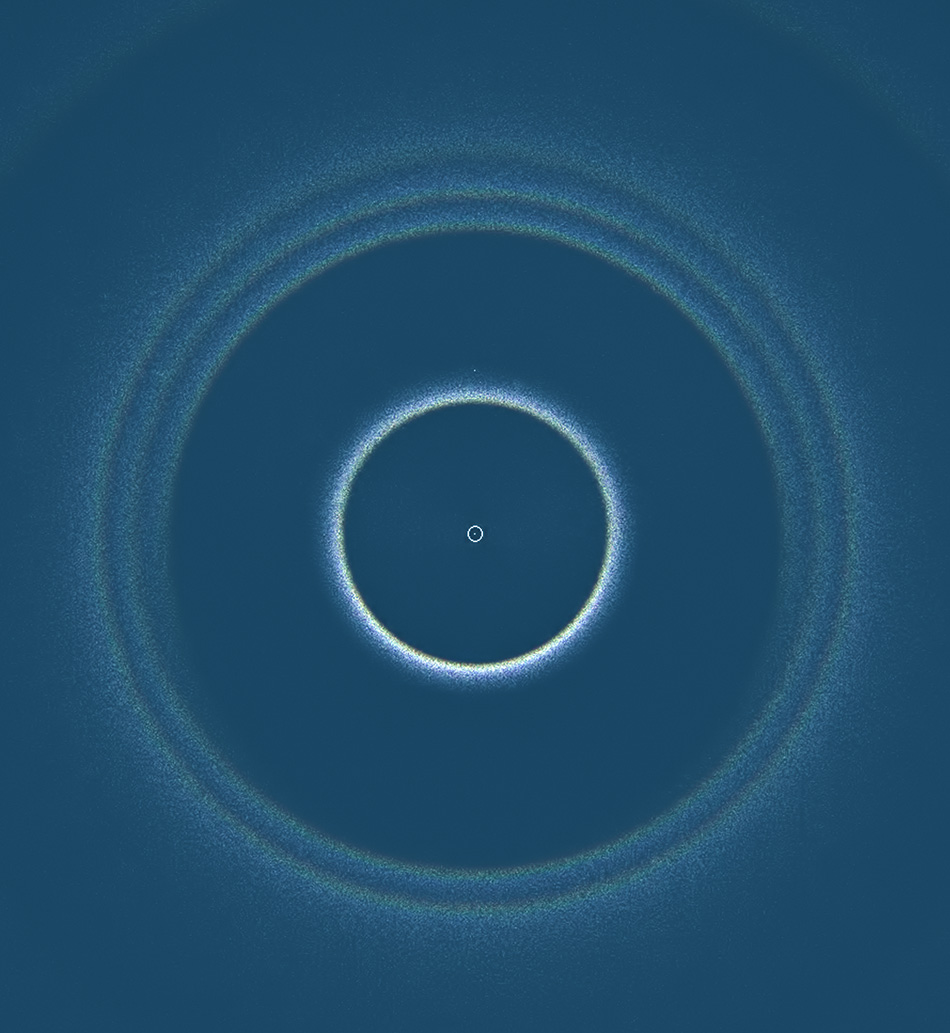Shirley Shebadieta took the image at left in Botswana, Southern Africa. Astronomer Stephen O�Meara forwarded it to OPOD/Atoptics Highlights.
There was something very strange going on. At top there are three equally spaced rings while at bottom there are two. A very bright inner ring surrounds the overexposed sun.
It looked like an odd radius halo display from pyramidal ice crystals in high cirrus. The inner ring was possibly a 9 degree halo. But all the rings were rather sharp, especially the inner one. More worrying, the outer rings of a pyramidal crystal display are not equally spaced. There is usually a ring of 18 degree radius followed perhaps by a 20 degree halo and then a blur of 22,23 and 24 degree halos.
| |
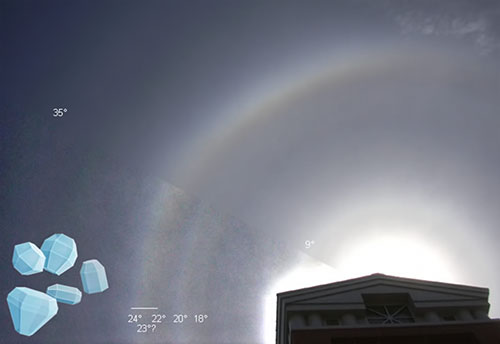 |
| |
Usual appearance of odd radius halos. No equal spacing. Details here. |
Were at least some of the arcs camera artefacts?
| |
When something unusual is detected in the sky always take several hand-held images. The different positions of the sun in each frame cause artefacts to change position and be easily detected. A real sky object should be unchanged. Furthermore, check what is visible by the unaided eye - not just on the camera screen! Only if these conditions are met is the sighting just possibly real. |
Shirley Shebadieta did see the arcs visually and took several images. Stephen O�Meara forwarded them. The camera was also checked against a clear sky and it did not produce artefacts. We had a real halo display but a very strange one.
The first outer ring was unlikely to be the usual 18 degree halo because measurements based on the innermost ring being a 9 degree halo put it further out. One possibility was a combination of 20, 22 and 24 degree circular halos. But I was uncomfortable with that as explaining the absence of an 18 degree halo was problematic.
I slept on it and next morning played with ray tracing simulations using HaloSim. Altering the pyramidal crystal shapes, as expected, did little to remove the 18 degree halo while keeping the others.
| |
 |
| |
Some randomly oriented pyramidal crystals. All have the same interfacial angles but the lengths of the pyramidal and central prism sections can vary. |
What if the crystals were oriented rather than had random orientations? Oriented pyramidal crystal displays are rare because the crystals are aerodynamically rather rounded and do not take up the precise �plate� or �column� orientations of ordinary hexagonal prisms. Anyway, plate or column pyramidal displays do not give neat circular arcs.. ..but see below.
| |
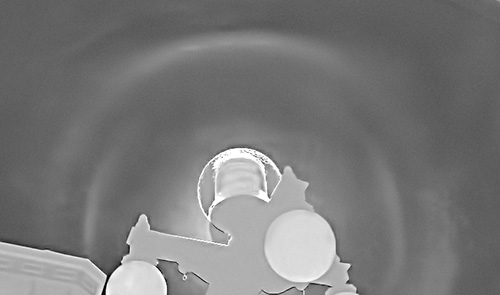 |
| |
Halos from horizontal plate oriented pyramidal crystals seen by Alistair Fraser. Partial and typically diffuse. Not like Shirley's Botswana halos. |
Then the penny dropped - It should have done so hours ago! Near noon the November sun is almost overhead at latitude 20N in Botswana.
Some �standard� pyramidal crystals with equal length truncated pyramids and central prism were put into HaloSim. I gave them very wobbly horizontal column orientations.
| |
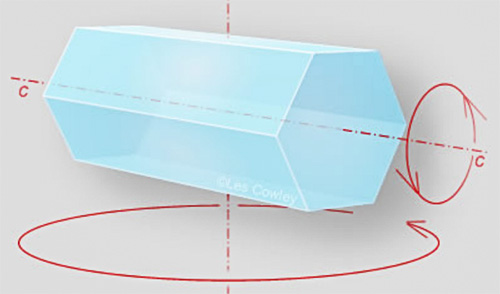 |
| |
Horizontal column orientation. The crystal's long axis is horizontal. the crystal takes all rotational positions around it. This one is an ordinary ice prism. Imagine pyramidal ends to make the crystals talked of here.
|
| |
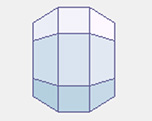 |
|
The crystal used for ray tracing. Ones with a longer hexagonal prism centre section are more likely to be horizontally oriented. However, playing with the multiple parameters of crystal habit in ray tracings can be overdone. |
| |
|
|
|
The solar altitude was set to 80 degrees and the ray tracing started. The machine ran millions of rays through the crystals and on the screen Shirley�s display popped straight out! There were three arcs roughly 20,22 and 24 degrees from the sun in the zenith direction with only two arcs 22 and 24 degrees below. The continuous '22 degree' arc is of course the familiar circumscribed halo from the central hexagonal prism section of the crystals.
The arcs were quite sun altitude sensitive - drop the sun below 75-80 degrees and the pattern goes. I anxiously mailed Stephen O�Meara to have Shirley check the time and date and thus the solar altitude. Yes! It was 79 degrees, just as wanted. The HaloSim ray tracing is at left.
A very unusual halo display indeed - and well observed. Horizontally aligned pyramidal ice crystals created it. If the sun had been a little lower the halo arcs would still have been rare but of more conventional appearance. The very high sun added that touch of extra rarity and challenge.






